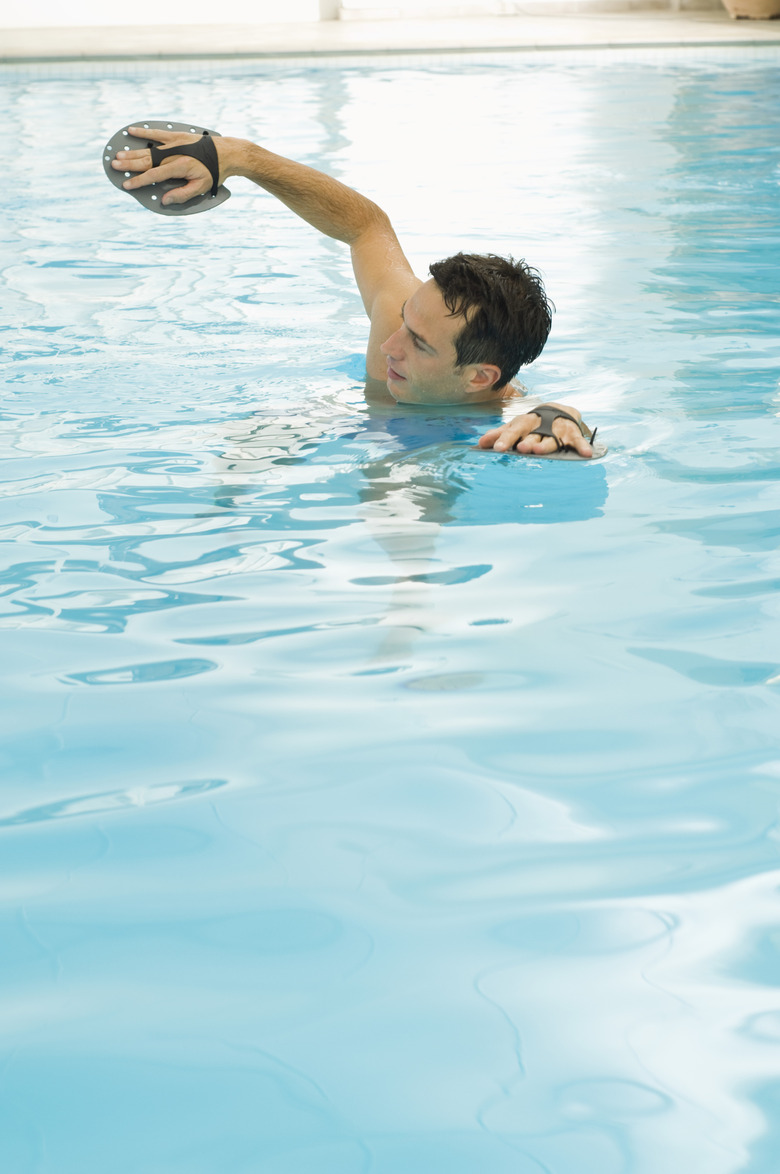What Is The Difference In Chlorine & Free Chlorine?
It is well known that chlorine in the water is a critical factor in keeping swimming pools safe for swimmers. In addition to a regular maintenance routine of scrubbing pool surfaces and maintaining filters that remove particular contaminants, testing and maintaining the proper pool chemistry, especially chorine levels, is crucial.
Chlorine is used to kill bacteria and algae to keep the pool water clean and healthy. But less well understood is that there are different types of chlorine in the water, and not all of them are "good" forms. Terms such as "total chorine," "chloramine" and "free chlorine" are terms pool owners should understand if they want to keep their pools safe for swimmers.
The Chemistry of Chlorine
The Chemistry of Chlorine
Chlorine, or Cl, is a very common chemical. In its pure elemental form, chlorine is highly toxic to nearly all life forms, but when bonded in certain compounds, it can be used as a disinfectant to kill bacteria and algae in swimming pools or as a general-purpose bleach.
The liquid chlorine used for swimming pools is sodium hypochlorite (NaOCl), which is essentially the same as ordinary household bleach. Most solid forms of chlorine, on the other hand, are products in which the chlorine has been bonded with calcium.
Swimming pools require roughly 2 to 3 cups of granular chlorine for every 50,000 gallons of pool water or half to three-fourths of a cup of liquid chlorine for every 50,000 gallons of pool water. These amounts depend on how heavily the pool is used, amount of rainfall and other conditions.
To stand how to maintain the proper pool chemistry, learn about the different ways that chlorine can be found in the pool.
Free Chlorine
Free Chlorine
Free chlorine is the chlorine that is available to combine with contaminants in the water to disinfect and sanitize the water. Chlorine that is added to swimming pools is "free" chlorine, in that it has not yet bonded with nitrates, ammonia or other compounds in the dirty pool water. Free chlorine to treat a pool can come in liquid form, tablet form or granular form. The only difference between these types is the material that is bonded with the chlorine. In liquid forms, the chlorine is bonded with sodium, while solid forms (tablet or granular) may use calcium as the bonding agent.
Combined Chlorine (Chloramines)
Combined Chlorine (Chloramines)
Once free chlorine does its job by binding with contaminants, it is still found in the pool water but is no longer available to do its job as a disinfectant. At this point, it is known as combined chlorine and must wait for additional chlorine to come in to continue to disinfect the water. This combined chlorine, called chloramines, is what gives swimming pools their characteristic chlorine odor. Though people think this condition is caused by too much chlorine, it actually means there is not enough free chlorine. Paradoxically, the smell of chlorine in the water means that more free chlorine should be added.
Total Chlorine
Total Chlorine
Total chlorine is a measurement of the total amount of chlorine in the pool — that is, the sum of both the free "available" chlorine and the combined chlorine that is holding the dirt, oils and other compounds that make pool water dirty and foul-smelling.
As the free chlorine is used up and combined with contaminants to become chloramine, or combined chlorine, more free chlorine in the form of liquid, tablet or granular chlorine must be added. When water problems arise in swimming pools, such as algae growth or cloudiness, this means that the level of combined chlorine has become excessive. The solution now is to "super-chlorinate" or "shock" the pool, which means adding 10 times the normal amount of chlorine generally used. This kills all the pool's bacteria, which is then extracted through the filter.
Testing for Chlorine
Testing for Chlorine
Not all test kits tell you the amount of free chlorine in the water. Cheaper kits may only give you the combined chlorine measurement, which obviously is not the most important measurement. Make sure you purchase a test kit that gives you a full range of measurements, including free or "available" chlorine.
Free chlorine should be maintained at 1 to 3 parts per million. Combined chlorine should be less than 0.2 parts per million. Combined chlorine levels higher than that indicate a need to shock the pool by super-chlorinating it.
